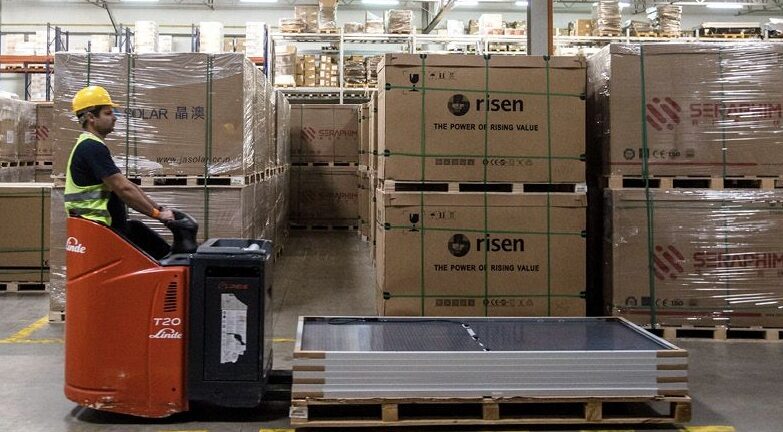Scientists from Rice University in Houston, Texas, have improved the stability of pervoskite solar cells by distributing 2D perovskites.
The scientists synthesized formamidinium lead iodide (FAPbI3) into ultrastable, high-quality photovoltaic films for high-efficiency perovskite solar cells. They hypothesized that using more stable 2D perovskites as a template could impart their stability to FAPbI3 during growth.
They fabricated four types of 2D perovskites to test the idea, two closely matching FAPbI3's surface structure and two less well-matched, and used them to make different FAPbI3 film formulations. They found that the 2D crystal template improved both the efficiency and durability of FAPbI3 solar cells. Solar cells with 2D templates didn't degrade after 20 days of generating electricity in air, while those without 2D crystals degraded significantly after two days.
“The addition of well-matched 2D crystals made it easier for FAPbI3 crystals to form, while poorly matched 2D crystals actually made it harder to form, validating our hypothesis,” said Isaac Metcalf, the lead author of the study. “FAPbI3 films templated with 2D crystals were higher quality, showing less internal disorder and exhibiting a stronger response to illumination, which translated as higher efficiency.”
The research team then found that by adding an encapsulation layer to the 2D-templated solar cells, stability was further improved to timescales approaching commercial relevance. According to their research paper – “Two-dimensional perovskite templates for durable, efficient formamidinium perovskite solar cells,” recently published in Science – the fabricated cell had a power conversion efficiency of 24.1% for a 0.5-square-centimeter active area and maintained 97% of their efficiency for 1,000 hours at 85 C under maximum power point tracking.
“Right now, we think that this is state of the art in terms of stability,” said Rice University engineer Aditya Mohite, “Perovskite solar cells have the potential to revolutionize energy production, but achieving long-duration stability has been a significant challenge.”
The team said that the findings could have an impact on light-harvesting, reduce manufacturing costs, and enable development of solar panels with that are lighter and more flexible than silicon solar panels.
“Perovskites are soluble in solution, so you can take an ink of a perovskite precursor and spread it across a piece of glass, then heat it up and you have the absorber layer for a solar cell,” Metcalf said. “Since you don’t need very high temperatures – perovskite films can be processed at temperatures below 150 C – in theory, that also means perovskite solar panels can be made on plastic or even flexible substrates, which could further reduce costs.”
This content is protected by copyright and may not be reused. If you want to cooperate with us and would like to reuse some of our content, please contact: editors@pv-magazine.com.




1 comment
By submitting this form you agree to pv magazine using your data for the purposes of publishing your comment.
Your personal data will only be disclosed or otherwise transmitted to third parties for the purposes of spam filtering or if this is necessary for technical maintenance of the website. Any other transfer to third parties will not take place unless this is justified on the basis of applicable data protection regulations or if pv magazine is legally obliged to do so.
You may revoke this consent at any time with effect for the future, in which case your personal data will be deleted immediately. Otherwise, your data will be deleted if pv magazine has processed your request or the purpose of data storage is fulfilled.
Further information on data privacy can be found in our Data Protection Policy.